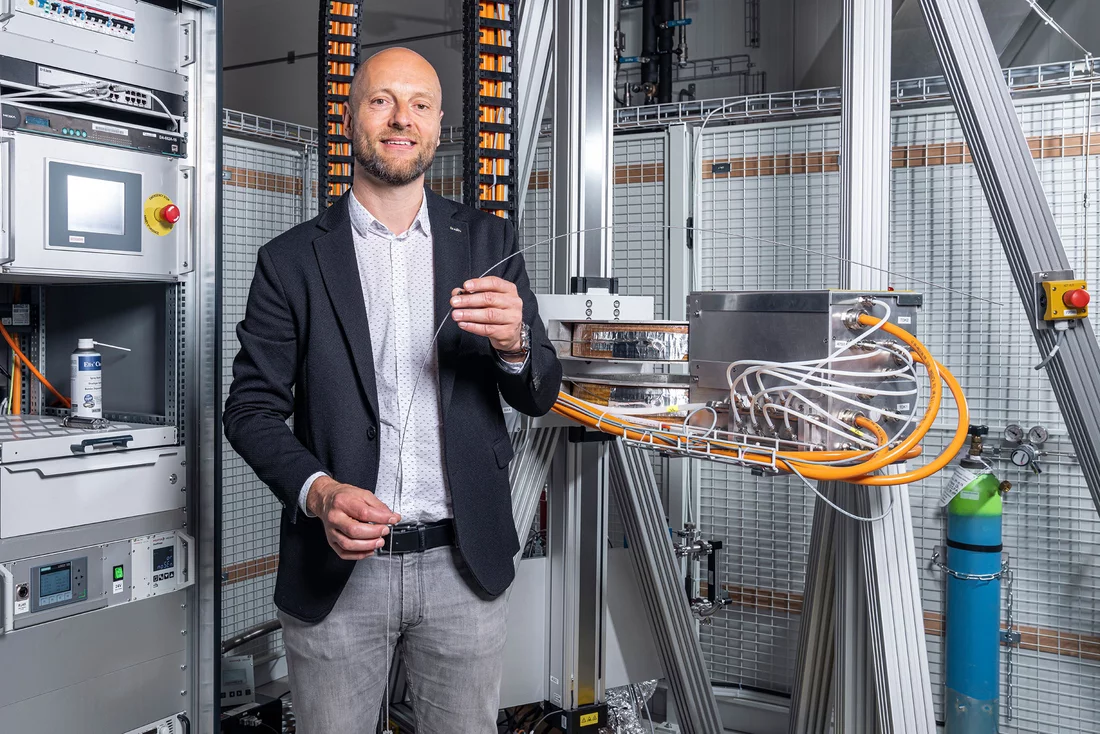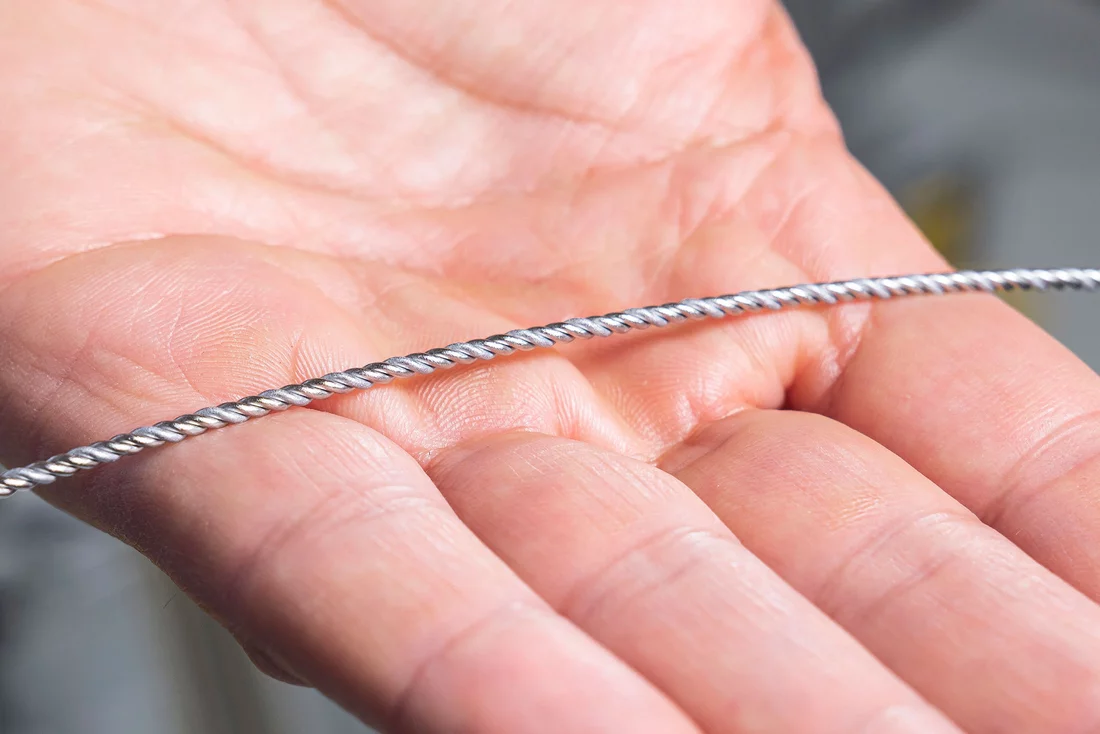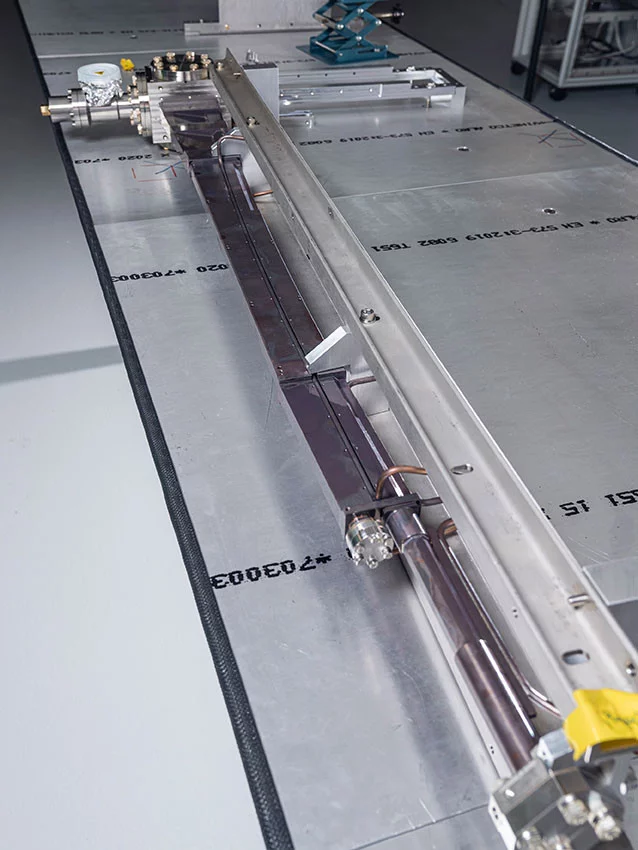When the vacuum chambers leave the PSI workshop, they are still not ready to be installed in the future SLS. Above all, they are still missing a surface coating that will support the vacuum pumps.
To further follow the process of how the chambers are created, we now have to cross the River Aare and enter a large hall on the western site of PSI with Romain Ganter. In addition to other preparations for SLS 2.0 – like measuring the future magnets – which are in full swing here, a seemingly inconspicuous apparatus is applying high-tech to the inner surfaces of the chambers: the NEG coating.
NEG stands for “non-evaporable getter coating”, a special metal alloy that absorbs gas molecules much as a sponge absorbs water. Without this development, which emerged in recent years and is already being used in other synchrotrons of the latest generation, it would not have been possible to build electron storage rings with smaller diameters. “Because the narrower a tube is, the more difficult it is to evacuate it completely with vacuum pumps,” explains Ganter.
NEG coating saves two years of time
In this case, “more difficult” means that while it would be possible, it would take several years to do. “With the pumps alone, the SLS could probably not achieve nominal operation until two years after its conversion, and possibly even longer. In any case, it would be far too long before research could be resumed.”
The NEG coating absorbs the molecules that the pumps cannot deal with so quickly. “With this, we are expecting to achieve the required vacuum level within just two months.” Once in operation, the system should have an ultra-high vacuum of just one billionth of a millibar. “Thanks to the advises of NEG experts from CERN we could rapidly develop a coating procedure at PSI.“
Ganter points to an inconspicuous structure. Inside, three slightly different coloured wires are twisted around one another, from top to bottom. “There’s one vanadium, one titanium and one zirconium wire,” explains Ganter. Together they produce the NEG coating. In order to apply the alloy evenly, the wire is threaded through the future vacuum chambers. In addition, some krypton gas is filled into the chamber. A narrow magnetic coil surrounds the outside of the chamber, which locally ignites a plasma in the krypton. “We run this coil up and down the chamber a hundred times. The plasma gradually knocks atoms out of the three metal wires, which are deposited on the inner surface of the chamber.” The NEG layer should end up being as uniform as possible, and half a thousandth of a millimetre thick.
“We are using this machine for the NEG coating of the one hundred chambers we are producing here at PSI,” explains Ganter. The chambers manufactured by external suppliers, on the other hand, are also coated externally. “This has allowed us to exchange ideas with the manufacturing companies on an equal footing: we have learned from them and they have learned from us. We now have this technology very much under control and this essential know-how too is secured at PSI,” says Ganter.
18-metre-long curved sections
After NEG coating, the chambers are joined together, each forming an 18-metre-long, curved section. This happens in a clean room in the SLS building itself, because at 18 metres they are not very easy to get through doors and gates.
On a long special table, brackets have been installed to support the chambers. This time, threaded connections are used instead of soldering. At this point, Ganter’s team also fits the cooling ducts and installs the temperature sensors, which will later provide essential feedback to the instruments during operation. Each chamber has multiple sensors, and the entire electron storage ring will be fitted with a total of 2000 sensors.
Next comes the vacuum test. Once the curved section has passed this, it is filled with nitrogen and stored until it is needed. The NEG coating can then be reactivated by heating.
For now, Ganter’s explanation of how the curved sections will eventually reach their place of deployment in the overall ring remains theoretical: “They will be clamped inside a metal frame that will be lifted with one of the SLS’s overhead cranes. This frame has to offer good support for everything if our 18-metre-long macaroni is to be transported safely,” Ganter smiles.
He appears to be looking forward to the watching this, shortly after the shutdown begins in autumn 2023.
Text: Paul Scherrer Institute/Laura Hennemann
Contact
René Sieber
Large Research Facilities Division, head of the Production Technology Section
Paul Scherrer Institute PSI
+41 56 310 54 19
rene.sieber@psi.ch
[German]
Dr. Romain Ganter
Large Research Facilities Division, head of the Vacuum Section
Paul Scherrer Institute PSI
+41 56 310 52 79
romain.ganter@psi.ch
[German, English, French]
Further information
SLS 2.0 - The upgrade of the Swiss Light Source SLS
Copyright
PSI provides image and/or video material free of charge for media coverage of the content of the above text. Use of this material for other purposes is not permitted. This also includes the transfer of the image and video material into databases as well as sale by third parties.



